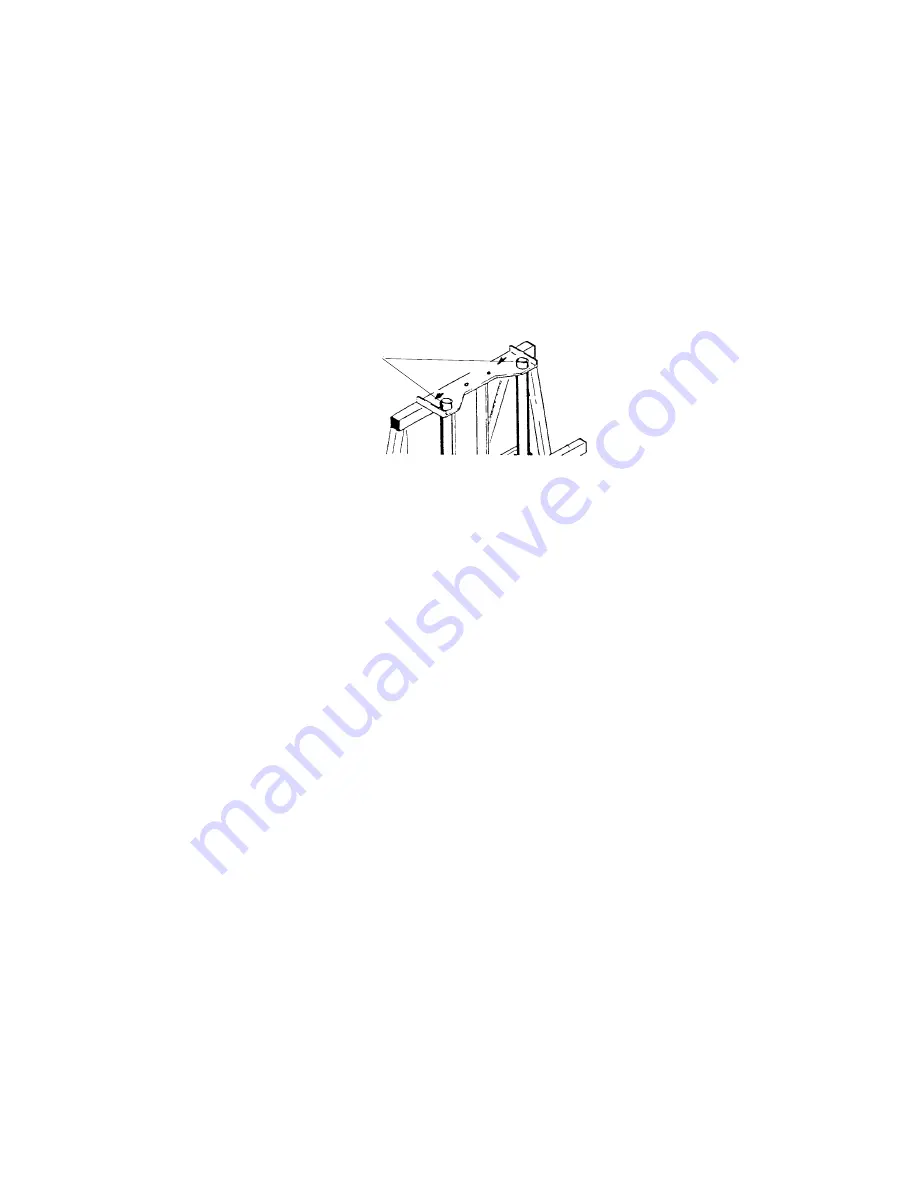
Step 3: Align the Guides
WARNING: Unplug the tool before beginning this adjustment.
If the tool does not cut at 90
°
, the guides may not be perpendicular to the rollers.
To check the guide alignment:
1.
Unplug the tool
before testing alignment or making adjustments.
2. Align the rollers (see Step 4 below).
3. Remove the blade guard to expose the blade. Mark a tooth to use as a reference. If you are using a high-
speed steel blade, mark a tooth that points toward the edge of the Alignment Tool (described above).
4. Clamp the Alignment Tool to the roller assembly.
5. Pull the carriage down slowly until the marked reference tooth just touches the vertical edge of the Alignment
Tool. Continue to pull the carriage down: if the blade does not contact the square, or if the blade binds on
the square, the guides are not aligned.
Counterbalance
removed for clarity
Guide Tube
Bracket Nuts
Figure 34: Aligning the Guide Tubes
To align the guides:
1. Loosen the guide bracket nuts (Figure 34), but
do not remove
the bracket. Using a deadblow mallet, strike
the bracket on the side and in the direction you wish the guides to go.
Do not strike the guides
.
2. Recheck the squareness of the guides to the rollers, using the procedure outlined above. Readjust if
necessary.
3. Securely retighten the guide bracket nuts.
Step 4: Align the Rollers
NOTE:
This step is not applicable to the Model TR-2.
To check the roller alignment:
1. Remove any Frame Extensions (reattach them after completing all alignment steps).
2. Remove or retract the Frame Stand, if used. Lay the tool flat so the roller nuts are easily accessible. With
proper care, you can place the tool on a table with the guides up.
3. The two outermost rollers are fixed, so adjust all other rollers to them. Lay the 6-ft edge of the Alignment Tool
(see above) across the rollers to verify alignment: all rollers should contact the edge. If a roller is “high” or
“low” to the edge of the Alignment Tool, align the rollers according the instructions below.
To align the rollers:
1. Clamp a straightedge (at least 5-ft long) to the top of the rollers so that it lies flat on the frame and against the
outermost rollers. Position the clamps above the outermost roller.
2. With the straightedge securely clamped, rotate each roller to be sure that it neither jams nor has excessive
clearance from the straightedge. If a roller runs “tight” or “loose” to the straightedge, loosen the roller nut.
The roller nuts are torqued and require at least an 18-in. breaker bar to loosen them.
3. All the rollers except the outermost are mounted on an eccentric center hub. Turning a roller when the roller
nut is loose will change the position of the roller. You may have to lift the front roller carriage bar to rotate the
eccentric hub. Turn the roller until it contacts the straightedge, being careful not to bend or bow the
straightedge when repositioning the roller.
4. Tighten the roller nut securely, making sure the roller does not change position.
5. Repeat this process as needed for any remaining rollers.
NOTE:
After replacing an
outside
roller, repeat
Step 2 as needed. Reposition the Frame Stand.
34
























